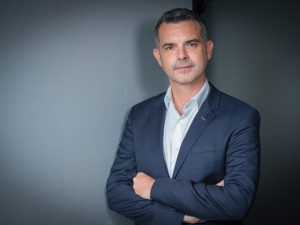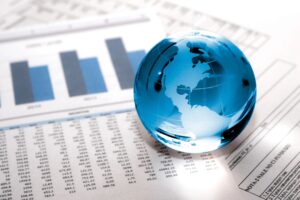
Who knew my last column would be prescient? It focused on fear, especially fear’s role in the quality of transitional moments. As a refresher, I wrote that innovations or changes, happen to us; they are external events that affect us. Transitions are the emotional and psychological journey we go through as we process those changes. The more fear we have, the more we resist change. The more fear, the less rational we become. While there are various strategies and methods available to help people weather transitions and adapt to innovations (changes), the stronger the resistance, the rougher the transition.
Since that column was published, global pandemic descended and virtually every person on earth is living through swift and drastic changes. Globally, individuals and institutions are struggling to transition through reality shifts that are both abrupt and continual. Our family members, colleagues, neighbours and friends are all experiencing emotional and psychological fluctuations as a result of this massive external disruption. And so are we.
Arguably, political leaders and medical experts are great at using various forms of media to tell us what to do: stay home, isolate, keep your distance, don’t travel, wash up for 20 seconds, radically reduce the time you spend out, wear a mask. That’s a lot to take in, especially when considering that within weeks, sometimes days, public figures have variously announced that this coronavirus is just like the flu and that an historic number of people will die from it.
As I write this, the numbers of people contracting COVID-19 and the number of those dying from it are rising, with both numbers doubling or tripling every few days. Statisticians predict Toronto will hit the so-called peak of the curve within a few weeks.
Transition
William Bridges’ three-stage model for Transition is comprised of Death, Neutral Zone and New Beginning. These stages can arise concurrently and reappear repeatedly. When life has been turned upside down, as is happening right now, there is no uniform pace of transition amongst people. Some may remain in the death phase, dealing emotionally with this loss, while others have progressed to the Neutral Zone – networking, searching opportunities or strategizing next moves. We are collectively living a global massive change and experiencing the need to transition. However, each one of us is on our own schedule.
Be forewarned, when the COVID-19 pandemic is finally resolved, that change will cause us to transition again, before we’re even through with this transition. The return of some social liberties may be felt as a sort of death, even though the death may result for many of us in feelings of relief. Just as external circumstances will not return to a previous state of normalcy, our inner journeys will not bring us back to a previous place. Rather, we’ll move into a new adaptation, a new normal.
Death
The hardships are real. I just got off the phone with a friend in a senior position who’s been laid-off from a job they’ve worked at for decades. An acquaintance who works in a hospital is fatiguing rapidly from the havoc this virus is wreaking. Another friend told me they had to lay off a large number of staff members.
In a recent article in the Harvard Business Review entitled That Discomfort You’re Feeling Is Grief, author Scott Berinato argues that as we see that the world has changed, we are feeling a communal sense of grief.
 I have to admit, I am feeling all stages of grief: sadness, anger, denial, bargaining and especially depression. The uncertainty of what lies ahead for my industry, my loved ones and myself can feel too hard to bear. I find myself sleeping a lot and staring blankly out the window. I’m late writing this article. Other projects have fallen off my radar.
I have to admit, I am feeling all stages of grief: sadness, anger, denial, bargaining and especially depression. The uncertainty of what lies ahead for my industry, my loved ones and myself can feel too hard to bear. I find myself sleeping a lot and staring blankly out the window. I’m late writing this article. Other projects have fallen off my radar.
Fortunately, I was certified this winter as a meditation teacher trainer at Toronto’s Hoame. My training and my personal meditation practice are helping me stay present with the inner journey. I trained in order to help others and myself better navigate emotions during change management or innovation projects. Who knew that next changes we’d need to transition through would affect all human activity? Practice with less monumental innovations would have been nice, but here we are, and my practice is helping.
Neutral Zone
After death in Bridge’s model comes the Neutral Zone. This phase begins just after the change is announced or introduced. Those affected by the change try to figure how to be, to deal, to feel and to act. This highly volatile stage is often also highly creative and innovative. We are currently seeing the results of this. Makeshift broadcast in-home studios are popping up daily. Lifestyle shows and newscasts are embracing videoconference technology, resulting so far in productions that resemble the quirky lovechild of Google Hangouts, a Zoom conference and broadcast TV.
A large majority of Canadians are working from home or are home and out of work. Families are creating at-home schedules. Some are homeschooling their children. Some are caring for their kids while striving to accomplish their own work. Videoconferencing technology has become the new venue for intimate and large gatherings: religious services, weddings, open mic nights, birthday parties, holiday dinners and more. Musicians of all stripes, from Coldplay’s Chris Martin to local Toronto DJ Dwayne Minard, are performing live on social media.
New Beginning
Through various video and telephone chats, I’ve had many clients, family members and friends indicate in the last week or so that they’ve established new routines and that they’re noticing various silver linings to this situation. Despite continual worry, they’re now feeling functional within the new confines imposed by the pandemic and capable of adapting emotionally and psychologically to the external changes.
A Brief Introduction to Strategic Foresight and Your Organization’s Pandemic Recovery Plan
 Some in the broadcast community are transitioning through the pandemic period we are in currently. Others have begun to look ahead to the transition that will be triggered by the pandemic’s end. They know it won’t take us back to a past normal so they’re asking where it will lead. How do they plan an effective brand or corporate recovery?
Some in the broadcast community are transitioning through the pandemic period we are in currently. Others have begun to look ahead to the transition that will be triggered by the pandemic’s end. They know it won’t take us back to a past normal so they’re asking where it will lead. How do they plan an effective brand or corporate recovery?
Reviewing current trends will guide and inform your recovery plan. Trends are behaviours repeated over time, and many in our industry follow them already. What we study less often are two key pieces of the recovery plan puzzle: the trends’ drivers (why this or that is trending) and signals (the many ways people experience the trend). So take the time now to gather some empirical indicators (observations, reports, reviews and articles) on the trends you’ve identified to hone or corroborate your perception and analysis.
Try to gather data on these trends from several fields of inquiry (social, political, technology, environment, etc.). Review the trends’ potential impact on society and their short- and long-term implications for your business. Listen, we’ve got time now we usually don’t have, so make it worthwhile: push through naming the trends to gathering evidence of future impact and implications. It really will help you plan an effective recovery.
Trend Examples
Here’s one rudimentary trend that, while not new, is newly changed: Mis-misinformation.
Description: Our industry is doing a great job providing information to Canadians on the pandemic. What I’ve noticed though, it that a substantive portion of my social media friends are combining data from various sources, even legitimate ones, and drawing conclusions based on very shaky correlations. This is not surprising, especially since even credible sources are reporting and later correcting some significantly faulty information. (I’m purposely ignoring the plethora of questionable sources. People, verify your sources!).
Drivers: What drives this trend? Lack of information and fear. People are finding ways to decrease fears and mitigate their perceptions of the situation’s gravity.
Honing/corroboration: What have we read or observed? Here’s a paraphrased Facebook comment: I’ve gotten these numbers from a variety of reputable sources and by stitching this data together I can see more people die of the flu. There is therefore nothing for us to fear.
Impact: In the end, the author loses credibility and the media on which they communicated gets blamed.
Implications: What are the likely implications to your business? Diminished trust and audience for your newscast.
The outcomes of this foresight process becomes fodder for developing tactics within your transition strategy. For example, you could decide that before sharing a story with your audience, your authors will need to triangulate their information with other sources. You could include that triangulation process in your public statement. Another approach could be to transform the trends you’ve identified into content or on-air segment opportunities: Is the flu deadlier than the Coronavirus? How to judge the legitimacy of information shared on social media?
Here’s another trend that might influence your Coronavirus and post-Pandemic strategy: Binary Choices – Endless or Limited
 Description: For years, we observed the shift to streaming media first at the home and then with the proliferation of broadband everywhere. Now an immense portion of the workforce is no longer commuting, they’re working from home or out of work. As a result, time spent listening to broadcast and satellite radio has suddenly diminished. Some people have unlimited bandwidth where they’re isolating, while others’ is more limited. All of them, however, are home choosing what to consume from an inexhaustible menu rather than in cars tuning in to radio programs.
Description: For years, we observed the shift to streaming media first at the home and then with the proliferation of broadband everywhere. Now an immense portion of the workforce is no longer commuting, they’re working from home or out of work. As a result, time spent listening to broadcast and satellite radio has suddenly diminished. Some people have unlimited bandwidth where they’re isolating, while others’ is more limited. All of them, however, are home choosing what to consume from an inexhaustible menu rather than in cars tuning in to radio programs.
Drivers: What drives this trend? Slowing the spread of COVID-19 through physical isolation and social distancing, as mandated by our governments.
Post-pandemic Impact: People might choose to work from home more regularly or even permanently once they regain a choice. Commutes per capita might be permanently diminished.
Implications: your business could draw temporarily decreased audience or even experience long-term audience loss because working people discovered other options during the pandemic.
Here is where your strategy might take different turns depending on your preferred future state. For example, you might need to remind your listeners that you are here and that you also stream your content. In this case, you would need an advertising campaign published on channels your audience is frequenting during the pandemic. Alternatively, content-specific marketing campaigns catering to specific segments of your audience might be the right move.
 These examples are rudimentary and relevant to the majority of us. I chose them to illustrate the impact of a trend analysis on your strategic decision-making. By adopting a structured Strategic Foresight method, you need not rely on conjecture, hearsay or knee-jerk reactions to guide your decisions. Instead, you can inform them with empirical evidence and analysis. Strategic Foresight helps you more accurately answer the question: What’s next?
These examples are rudimentary and relevant to the majority of us. I chose them to illustrate the impact of a trend analysis on your strategic decision-making. By adopting a structured Strategic Foresight method, you need not rely on conjecture, hearsay or knee-jerk reactions to guide your decisions. Instead, you can inform them with empirical evidence and analysis. Strategic Foresight helps you more accurately answer the question: What’s next?
As I wrote earlier, the Neutral Zone of a transition can be a very creative and innovative time. What a great time, then, to observe the world around you and work on understanding trending behaviours. Reflect on what is happening now and what it might mean for your organization now, in a month, and in a year.
As you navigate this pandemic transition and the post-pandemic one, please do all you can to remain healthy and safe. I wish you a speedy recovery to those of you who are ailing. To those who have or will lose loved ones due to COVID-19, I wish you comfort in your grief. And for all those on the medical, supply chain, and human-services front lines, I wish you strength and good health. I thank you for your courageous service.
If would like more information on using Strategic Foresight methods, please contact me at eblais@statsradio.com.
Subscribe Now – Free!
Broadcast Dialogue has been required reading in the Canadian broadcast media for 25 years. When you subscribe, you join a community of connected professionals from media and broadcast related sectors from across the country.
The Weekly Briefing from Broadcast Dialogue is delivered exclusively to subscribers by email every Thursday. It’s your link to critical industry news, timely people moves, and excellent career advancement opportunities.
Let’s get started right now.




